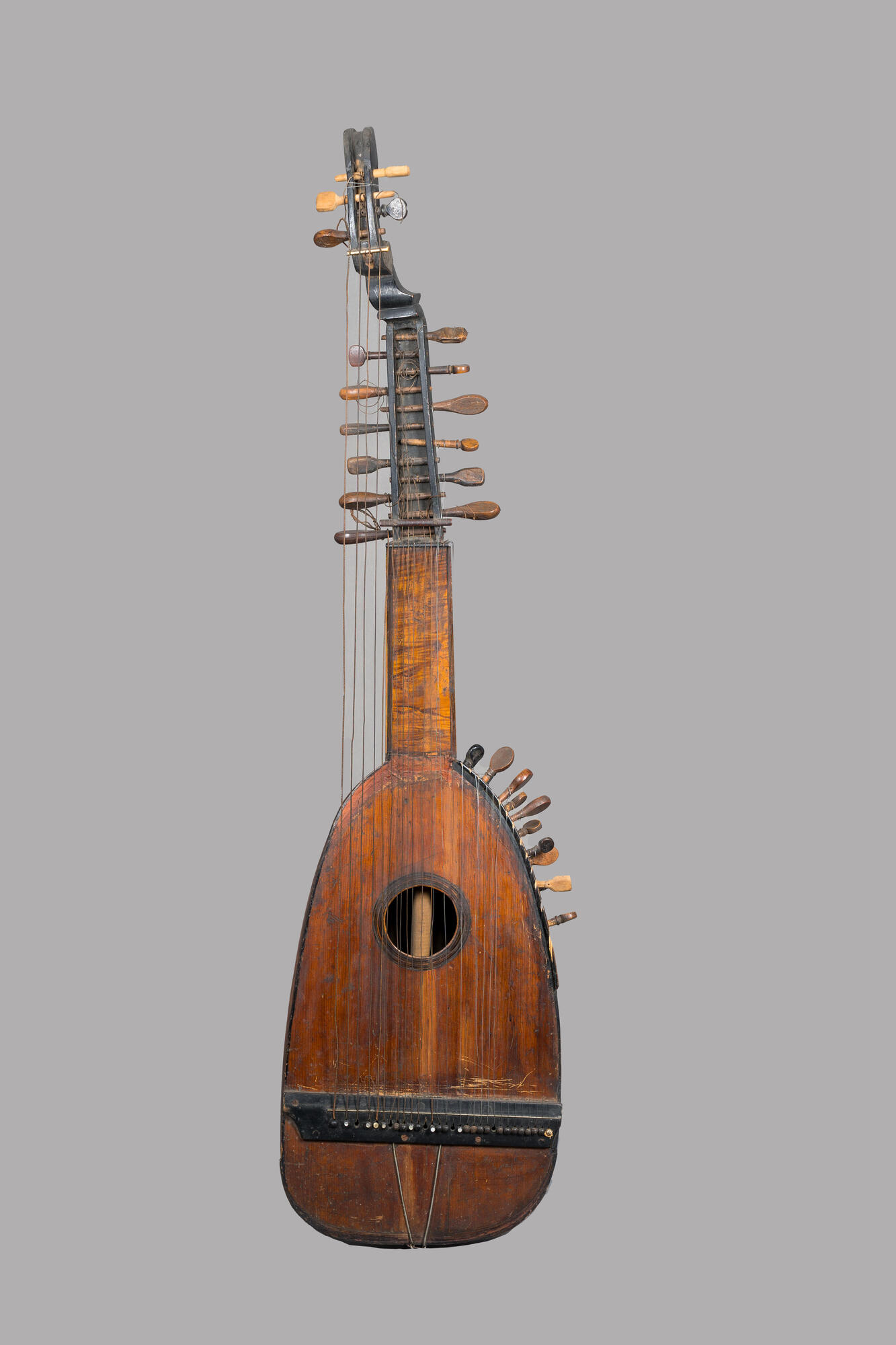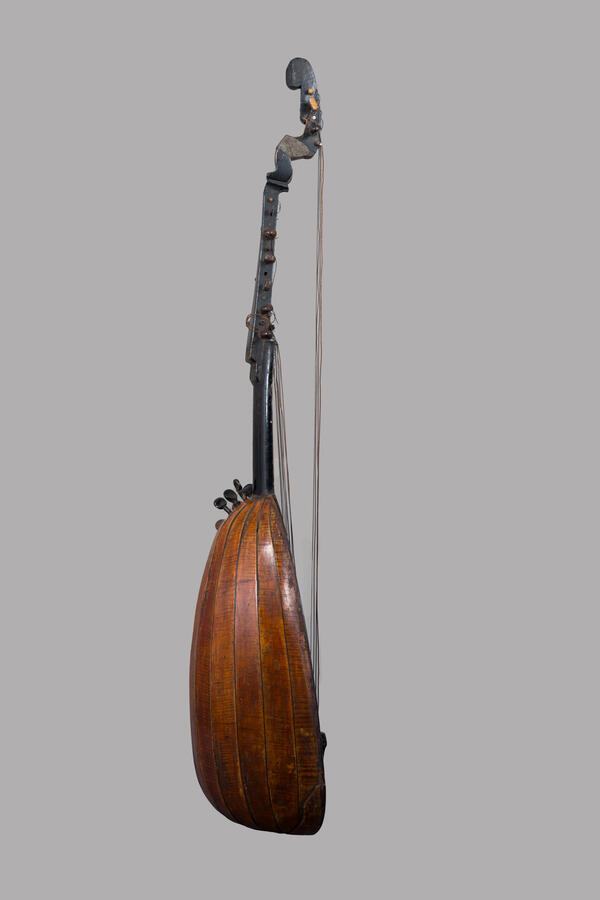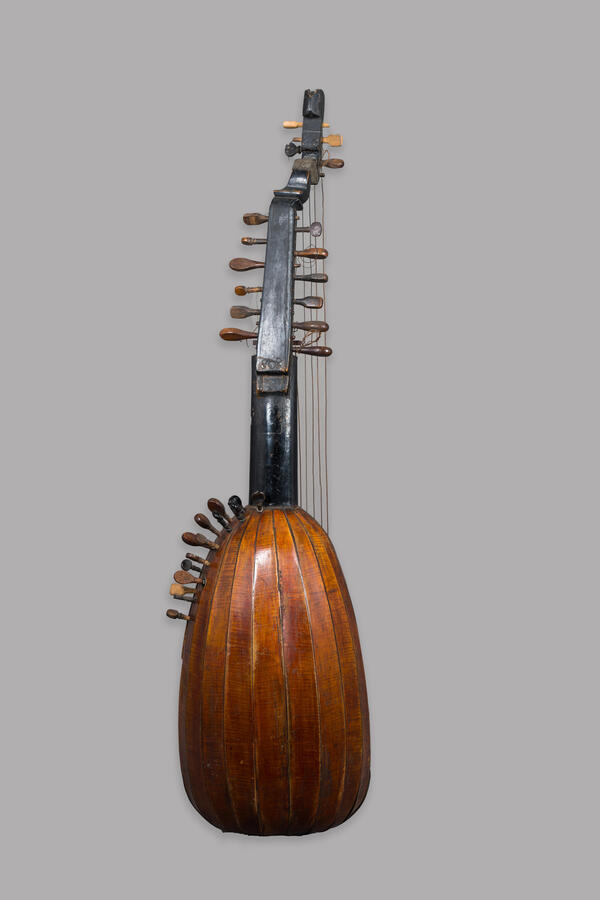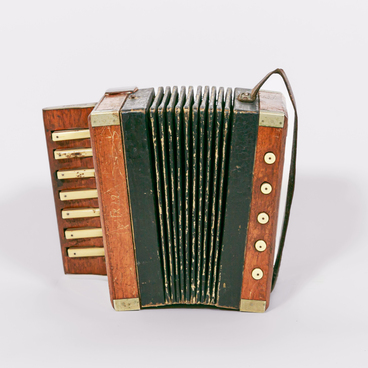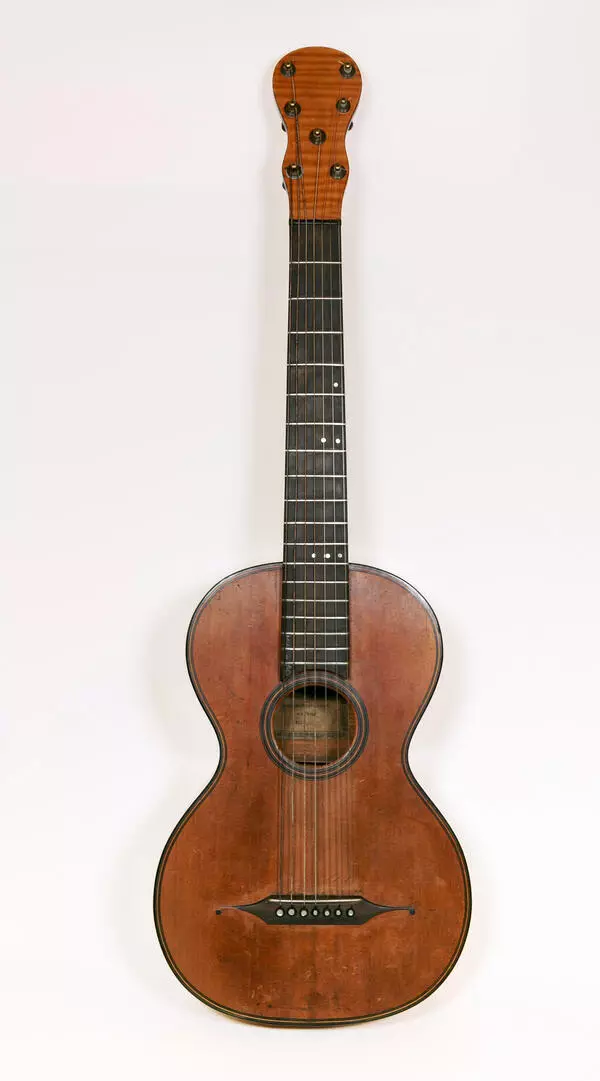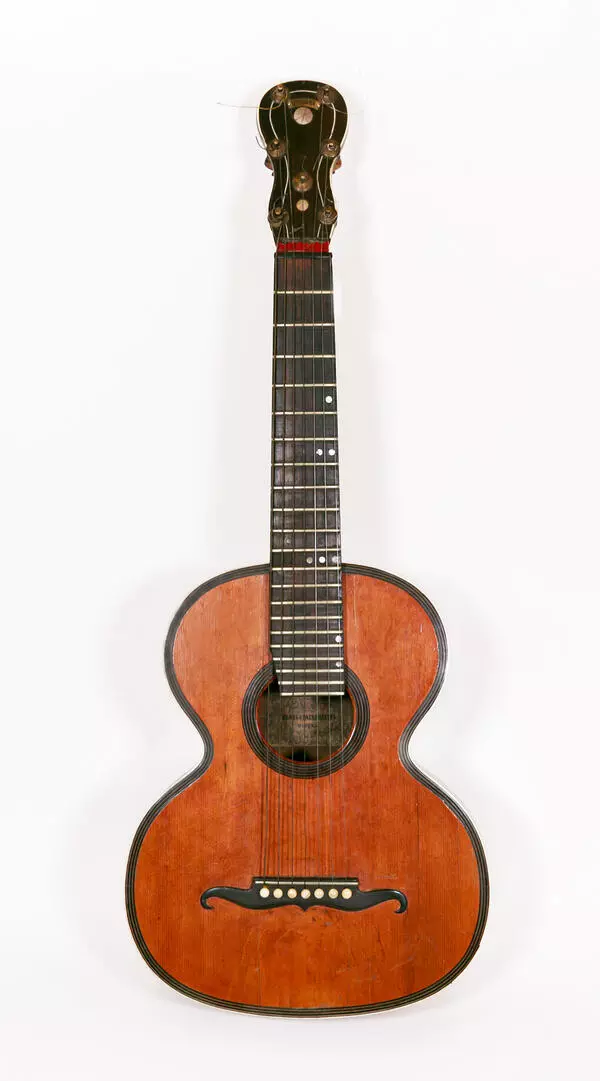The torban is a musical instrument that represents the bass variation of the bandura. However, compared to the bandura, it has a deeper body and more strings. The instrument from the museum’s collection has 30 strings.
The lowest strings are known as tors. They are attached to the secondary pegbox. The bass strings go to the main pegbox. The short treble strings known as “prystrunky” are strung over the right side of the soundboard.
The musician holds the instrument horizontally and plucks the strings with the fingers of both hands. Unlike the bandura, the torban uses only gut strings, which gives the instrument a softer sound.
The torban was popular among the Cossack officers and Ukrainian gentry. This is why it was often referred to as “the bandura of the pans.” The instrument was brought to Russia in the late 18th century and the first third of the 19th century, but it was mainly played in pubs.
The torban from the museum’s collection was made by the famous craftsman Ivan Krasnoshchyokov. He was particularly revered for his seven-string guitars and violins. It may be assumed that he made the torban either on commission or as an experiment.
The instrument belonged to the famous bandurist Vasyl Shevchenko. In his autobiography, which is also presented in the museum’s collection, Shevchenko told the story of the torban, “In 1902, I went to the music store that was across the road from the conservatory on Bolshaya Nikitskaya street in Moscow. Its owner was a Ukrainian, and I paid in salo to buy a hetman bandura manufactured by the famous guitar maker Ivan Krasnoshchyokov.” Shevchenko used the instrument between 1903 and 1946.
In 1902, Vasyl Shevchenko joined the folk music ensemble of Mitrofan Pyatnitsky as a singer and bandurist. For a certain period in 1905, he was an actor and singer at the “Experimental Studio on Povarskaya Street” of Konstantin Stanislavski and the Moscow Art Theater.
Between 1912 and 1914, Shevchenko was the head of the Moscow Bandurist Capella. During the same period, he organized bandura courses at the Moscow group “Kobzar.” Vasyl Shevchenko donated the instrument to the museum in 1955.
The lowest strings are known as tors. They are attached to the secondary pegbox. The bass strings go to the main pegbox. The short treble strings known as “prystrunky” are strung over the right side of the soundboard.
The musician holds the instrument horizontally and plucks the strings with the fingers of both hands. Unlike the bandura, the torban uses only gut strings, which gives the instrument a softer sound.
The torban was popular among the Cossack officers and Ukrainian gentry. This is why it was often referred to as “the bandura of the pans.” The instrument was brought to Russia in the late 18th century and the first third of the 19th century, but it was mainly played in pubs.
The torban from the museum’s collection was made by the famous craftsman Ivan Krasnoshchyokov. He was particularly revered for his seven-string guitars and violins. It may be assumed that he made the torban either on commission or as an experiment.
The instrument belonged to the famous bandurist Vasyl Shevchenko. In his autobiography, which is also presented in the museum’s collection, Shevchenko told the story of the torban, “In 1902, I went to the music store that was across the road from the conservatory on Bolshaya Nikitskaya street in Moscow. Its owner was a Ukrainian, and I paid in salo to buy a hetman bandura manufactured by the famous guitar maker Ivan Krasnoshchyokov.” Shevchenko used the instrument between 1903 and 1946.
In 1902, Vasyl Shevchenko joined the folk music ensemble of Mitrofan Pyatnitsky as a singer and bandurist. For a certain period in 1905, he was an actor and singer at the “Experimental Studio on Povarskaya Street” of Konstantin Stanislavski and the Moscow Art Theater.
Between 1912 and 1914, Shevchenko was the head of the Moscow Bandurist Capella. During the same period, he organized bandura courses at the Moscow group “Kobzar.” Vasyl Shevchenko donated the instrument to the museum in 1955.
